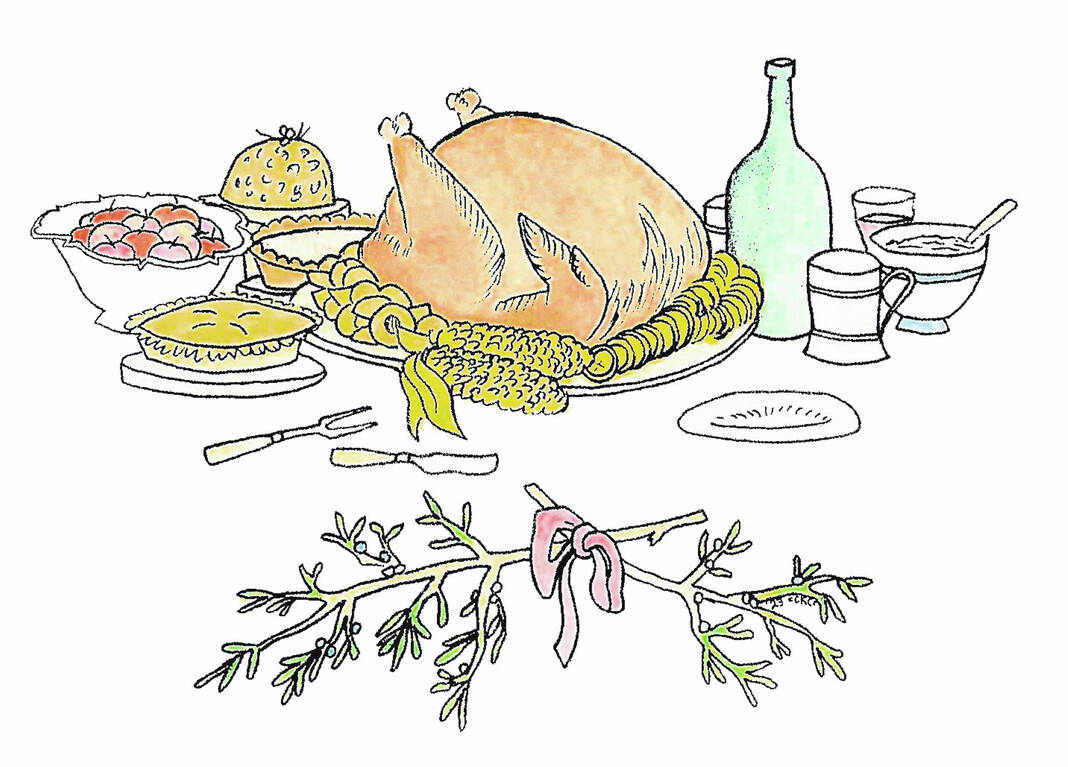
Cait Clark created the illustration especially for this article.
GREENVILLE — Much had transpired during the two years since Fort Jefferson had been established. Immediately after the fort’s construction in October of 1791, Gen. Arthur St. Clair’s temporary army of U.S. Troops and Kentucky Militia had been severely crushed by Chief Little Turtle and the northwest Native American confederation at modern day Fort Recovery, Ohio. Yet, after the defeat, this remote wilderness outpost withstood repeated efforts by the natives to attack fort personnel and to steal horses and cattle. Many men had died and the extreme difficulty of supplying and maintaining the garrison made for tough times indeed.
In October of 1793, Major General “Mad” Anthony Wayne and the recently formed Legion of the United States arrived at Fort Jefferson. Wayne’s army then marched six miles north and proceeded to construct the largest wooden fortification ever built on American soil. This new fortress consisted of over 50 acres of enclosure, complete with eight “exterior redoubts.” Wayne never referred to it as a fort and, on November 21, simply named it “Greene Ville” in honor of American General Nathaniel Greene.
It would seem that with all of the bustle of activity during this phase that it would be difficult to find both the time and resources to hold a celebration of the birth of Christ and the New Year. However, there is a record of such an activity taking place that can be found in the diary of Major John Hutchinson Buell. One of the most fascinating accounts of the Legion oriented journals, Buell’s diary features many details that are absent in other contemporaneous journals of the region. While the following entry doesn’t mention either Christmas or New Year, the festive mood and time frame of the feast provide plenty of evidence to suggest such a celebration.
Misspellings, etc. are retained as originally transcribed in Buell’s diary.
Jan. 1, 1794
”I went with the commander-in-chief and a number of other officers to Fort Jefierson and dined with General Wilkinson. Bill of fare: roast venison, roast beef boiled, and roast mutton boiled and roast veal boiled and roast turkey and fowls; raccoons, possums, bear meat, pies made of chickens, mince, applies, tarts, &c., &c. Sweetmeats of every kind, preserves and jellies, floating island and ice cream, plum pudding and plum cake, vegetables of every kind, a plenty of the best wine, at evening we had tea and coffee in high style, Mrs. Wilkinson was present, we got back to Greenville ten o’clock at night.”
Gen. Wayne, Major Buell and other officers had been invited to Fort Jefferson by Wayne’s second-in-command, Brig. Gen. James Wilkinson, who had arranged for a fine house to be built for his lovely wife, Anne. While James was by no means as lovely as his wife, he did possess a charming personality that was surely exhibited at this affair. Obviously, the Wilkinson’s and staff had taken great pains to prepare a feast that, even by today’s standards, seems practically incomprehensible.
Let’s take a look at the “bill of fare” in detail: The menu includes a list of meats that most modern readers can identify with: venison, beef, mutton, veal, turkey and chicken are all table-fare that can still be found on dining room tables across the continent. Although this author is an avid hunter, I’m ashamed to admit that I’ve never experienced the apparent delicacies of raccoon and possum. Notice that Major Buell makes no attempt to disguise these two woodland creatures on the list. The bear meat may also be a surprise to some readers. It actually is quite tasty and, yes, along with wolves, panthers and woodland bison, black bears did roam this region at that time. The mince, apples, tarts, preserves and jellies are also items familiar to the modern connoisseur. Research has revealed that the “floating island” is similar to a merengue that is not baked but rather cooked on top of boiled milk or cream and it would be interesting to know how ice cream was churned or otherwise made in 1794. Today, plum pudding is a rarity and yet, my wife’s family makes a cranberry plum-pudding that hearkens back to their roots on the eastern seaboard. It’s a delicious moist cake-type breading that is doused in a heated sweet syrup. The vegetables would have required a cellar for preservation and finally, it’s worth noting that the fine wines, tea and coffee would have required shipment from the east at great difficulty and expense.
Envision, if you will, that scene of long ago that transpired right here in Darke County: There’s frost on the imported plate-glass windows, a crackling fire, possibly some boughs of cedar are on the railing.
Delightful aromas fill the air. The impeccably dressed attendees exchange pleasantries, speculating on what the New Year holds in store for the future of the northwest territory frontier…
Merry Christmas everyone!




